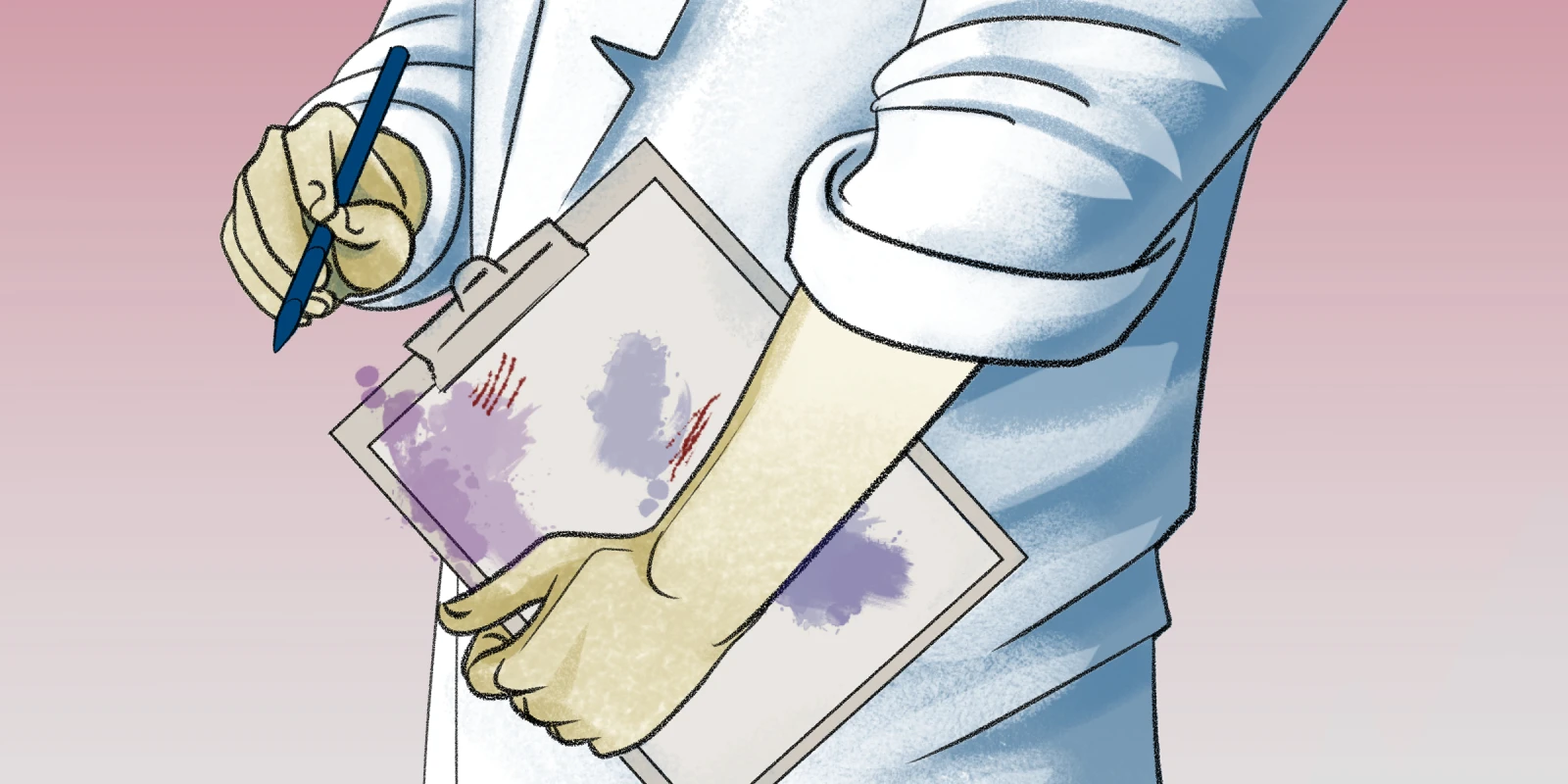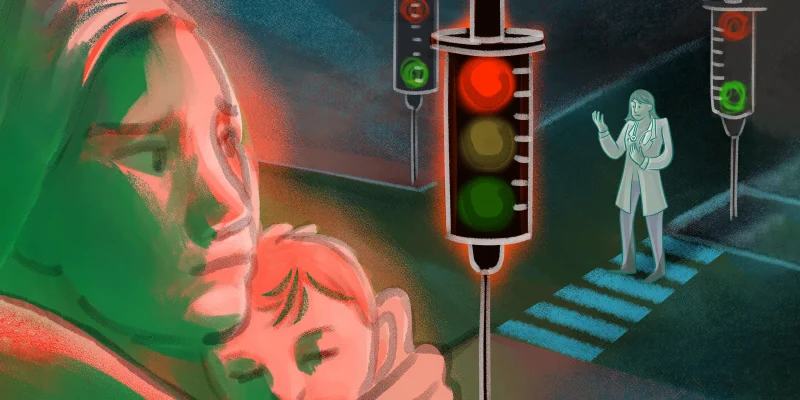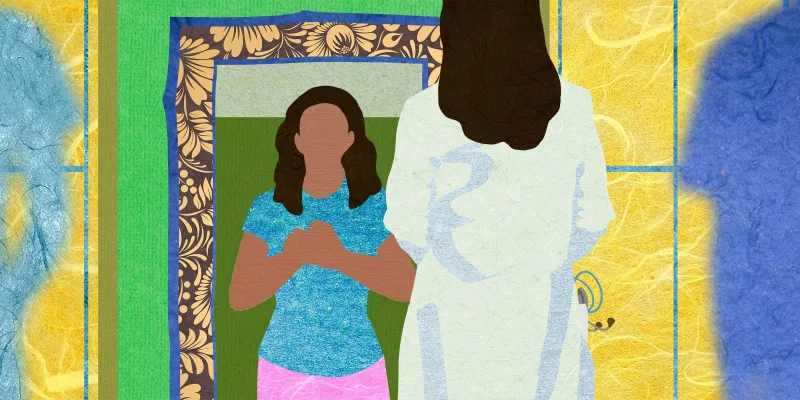
It was a Friday at 4 p.m., the last appointment of another long week. Mary, the patient, was seated in a wheelchair. This was the first red flag — a sign this visit would last much longer than the allotted time. Dr. Miller, the attending physician, and I, the medical resident, immediately noticed that Mary had lines of orange in her hair. They made her look like a vibrant, outgoing 70 year-old. We both complimented her style.
“I have pain all over.” This was the second red flag. The attending physician was a spine specialist who focused specifically on neck and back pain. She was probably seeing the wrong kind of doctor.
“How long have you had the pain for?” Dr. Miller asked.
“Forever.” This was the third red flag.
We were definitely going to disappoint this patient with her nebulous symptoms. I knew this kind of patient: the one who jumps between providers and hospital systems looking for solutions that don’t seem to exist. My brain started to wander. Would I get out of here in time to pick up my kids from school? I should have eaten a bigger lunch. How was Dr. Miller going to get us out of this exam room?
“How long exactly? Where is the pain exactly? Point to me. What makes it worse? What makes it better?” Exactly like he did with all of his patients, Dr. Miller painstakingly collected the facts with precise detail. I forced myself to regain focus. We learned she had constant pain in her knees, hips, calves, thighs, forearms, and back. The stats would give any chronic patient a run for their money: seven hip surgeries, two knee surgeries, and countless steroid injections. She had had the pain for 25 years and nothing seemed to improve it. He then proceeded to review all of her imaging personally, not relying on a single radiologist’s report. I was definitely not going to leave in time to pick up my kids.
After 30 minutes of history-taking, Dr. Miller abruptly ended it. He looked straight into Mary’s eyes and asked: “Have you ever been abused?”
I was stunned. I knew Dr. Miller had an eccentric personality, but this felt like a non-sequitur, or worse, an intrusion.
But Mary’s eyes were locked with his. She answered without hesitation. “Yes. My ex-husband would beat me over and over again every day.”
“Is this when your pain started?”
“Yes.”
Mary didn’t look offended or startled. In fact, she looked relieved, at peace, as if she had been yearning for years to utter those words to someone ready to listen.
“The trauma that you endured disrupted your entire pain system. Those neurons keep firing, telling your brain that something is wrong, even though your exam and imaging are not abnormal.”
Their eyes remained locked.
Mary had been proceduralized with surgeries and injections for decades. She was given hope which was dashed, over and and over and over again. I didn't think she had any left. She spent her days alone in her apartment waiting for the mailman to come to her door to have someone to say hello to. But she had a story, and Dr. Miller listened patiently and scientifically. He was careful to trust no one’s opinion but his, to review her imaging himself, to first rule out any infections, cancers, or fractures. He collected the facts, reviewed the data, and formed a remarkable hypothesis. Legions of doctors had puzzled over her case for 25 years, but the diagnosis was in the history — in-between its lines.
Having been heard, Mary was now receptive to next steps. “What do I do, then?” she asked.
Although not taught as part of my formal medical education, there is an entire body of literature on this connection between post-traumatic stress and chronic pain. Victims of trauma exhibit higher levels of pain and higher rates of chronic pain. The exact connections are not completely understood, but there are a number of theoretical models, including the model described by Dr. Miller. This fear and catastrophization of pain, which is more common in trauma victims, may worsen the experience of pain by interfering with the normal pain sensitization process. Dr. Miller draws a parallel for all his patients to explain the normal pain sensitization process: the first time a person walks barefoot outdoors, their feet are initially sensitive, but within a short while they can walk around comfortably. With repetitive activity, our nervous system becomes desensitized to a pain stimulus. Trauma may interfere with this natural process of desensitization, preventing the body from adapting to new stressors.
Dr. Miller distilled a career's worth of science research and clinical care into one powerful message for Mary. “You are obviously strong. You got yourself out of a terrible situation; you raised your children alone; you cared for your aging parents alone. You are resilient. You can and should continue to live your life."
He looked at her a moment, and continued. "What does that mean? The more you remain active, the more likely your nervous system will be able to adapt to these pain signals. It is important for you to know that there is nothing physically dangerous about the pain you are feeling. You should continue to get out of the house more, to move, and to start with our intensive PT program.”
Mary's eyes remained locked on his. As Dr. Miller spoke, I saw a light in them that I hadn't noticed before. Another procedure or medication could not ease her pain. But by finding and recognizing the spirit between the lines of her life, perhaps she could find a new solution.
All names and identifying information have been modified to protect patient privacy.
Illustration by April Brust







